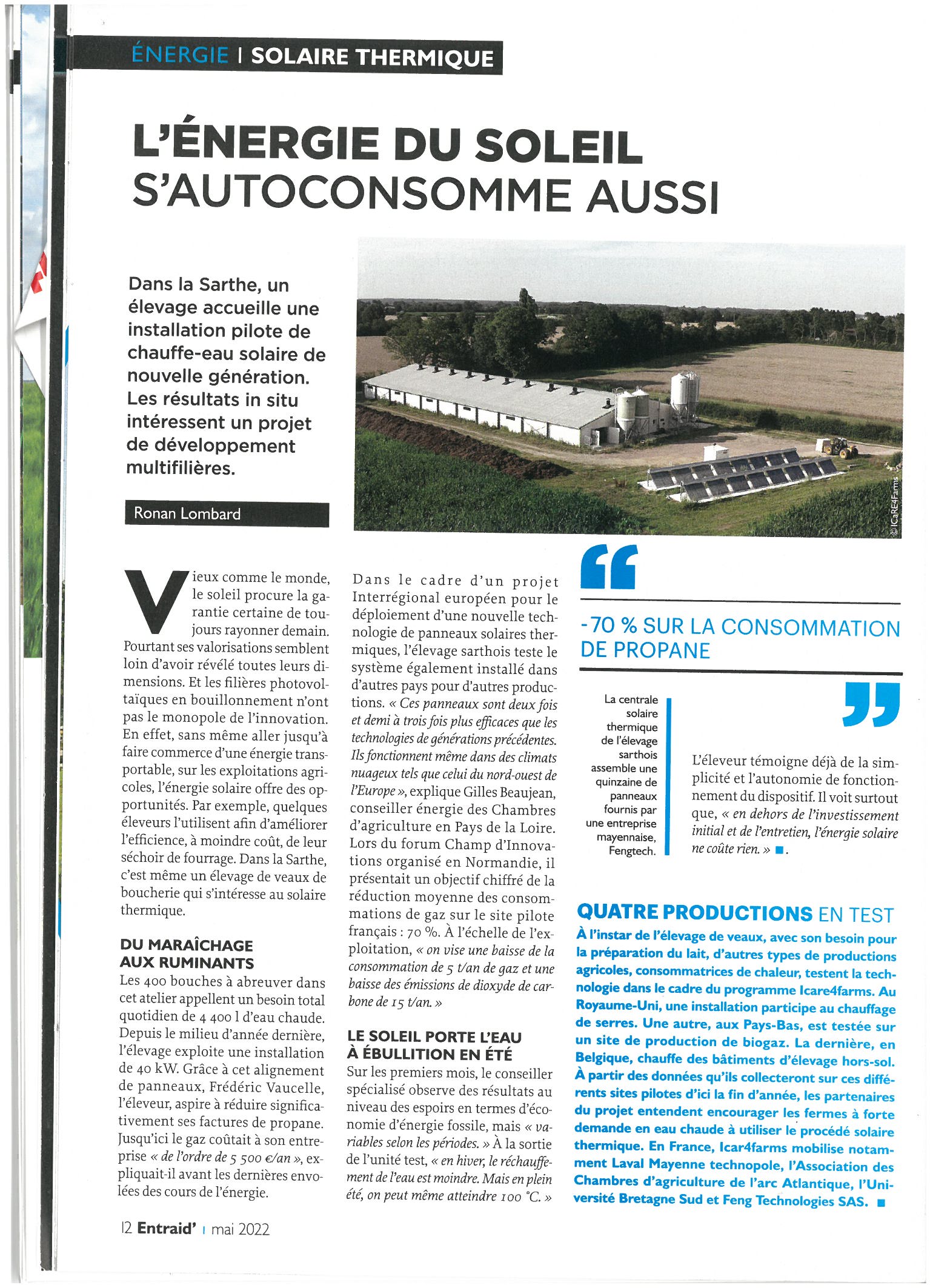This is a translation of the article about solar thermal and ICaRE4Farms into English.
In Sarthe, a farm is hosting a pilot installation of new-generation solar water heaters. The in situ results are of interest to a multi-sector development project.
As old as the world, the sun provides a certain guarantee of always shining tomorrow. Yet its valuations seem far from having revealed all their dimensions. And the bubbling photovoltaic sectors do not have a monopoly on innovation. Indeed, without even going so far as to trade in transportable energy, on farms, solar energy offers opportunities. For example, some breeders use it to improve the efficiency, at a lower cost, of their fodder dryer. In Sarthe, there is even a beef calf farm that is interested in solar thermal
FROM MARKET GARDENING TO RUMINANTS
The 400 watering holes in this workshop call for a total daily need of 4,400 liters of hot water. Since the middle of last year, the farm has been operating a 40 kW plant. Thanks to this alignment of panels, Frédéric Vaucelle, breeder, aspires to significantly reduce his propane bills. So far the gas was costing it's between. taken “around €5,500/year”, he explained before the latest surges in energy prices.
As part of a European Interregional project for the deployment of a new thermal solar panel technology, the Sarthois farm is testing the system also installed in other countries for other productions. “These panels are two and a half to three times more efficient than previous generation technologies. They even work in cloudy climates such as that of North-West Europe,” explains Gilles Beaujean, energy advisor to the Chambers of Agriculture in Pays de la Loire. During the Champ d'Innovations forum organized in Normandy, there was a quantified objective for the average reduction of gas consumption on the French pilot site: 70%. At the farm level, “we are aiming for a reduction in gas consumption of 5 W/year and a reduction in carbon dioxide emissions of r5 t/year.”
THE SUN BRINGS WATER BOILING IN SUMMER
Over the first few months, the specialist adviser observes results in terms of hopes in terms of saving fossil fuels, but “variable depending on the period. When leaving the test unit, “in winter, the heating of the water is less. But in the middle of summer, you can even reach 100°C. »
The breeder has already testified to the simplicity and operating autonomy of the device. Above all, he sees that “apart from the initial investment and maintenance, solar energy costs nothing. »
FOUR TEST PRODUCTIONS
Like calf rearing, with its need for milk preparation, other types of agricultural production, which consume heat, are testing the technology as part of the Icare4farms program. In the United Kingdom, an installation participates in the heating of greenhouses. Another, in the Netherlands, is being tested on a biogas production site. The last, in Belgium, heats above-ground livestock buildings.
Based on the data they will collect on these various pilot sites by the end of the year, the project partners intend to encourage farms with high demand for hot water to use the solar thermal process. In France, Icar4farms mobilizes in particular Laval Mayenne Technopole, the Association of Chambers of Agriculture of the Atlantic Arc, the University of South Brittany and Feng Technologies SAS. -


